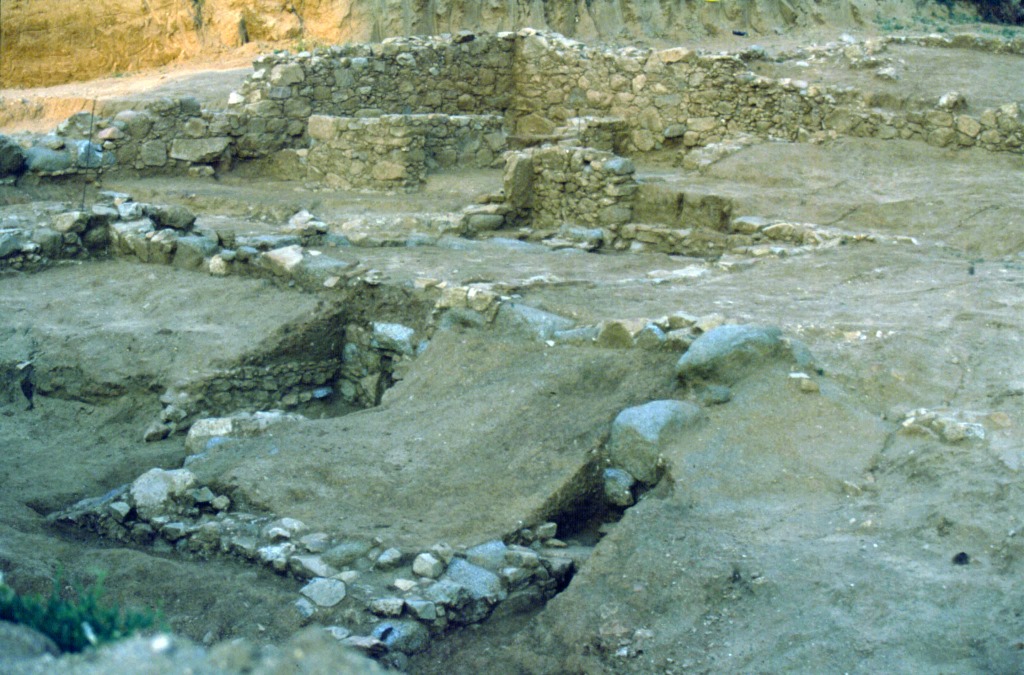This is the name given to the buildings immediately to the south of the bath complex. It contains residential structures, in two clearly differentiated groups that we have named House 1 and House 2.
The excavations in 1997-1998 involved only four of the southernmost rooms of house number 1, which proved to have been used for domestic purposes between the third quarter of the 2nd and the first quarter of the 1st c. B.C.E. It is still unclear how they relate to areas which remain to be excavated, but it seems, on the basis of their overall plan and the pattern of inter-communication, that they formed part of a large residential complex with a known surface area of approximately 220 square metres.
The rooms are small, with clay floors and perimeter walls that, in some cases, serve as retaining walls for the surrounding terrain, in which case they are made of stone cemented together with mud. In the cases when walls are simply partitions between rooms, they are of mud-brick set on stone foundations. All of the walls also seem to have been mud plastered and may have been whitewashed.
Following the first excavation of Can Mateu House 2 in June 2015, the overall layout of the household was uncovered. The house is composed of at least five rooms with a surface area of approximately 100 square metres. The rooms abandoned around 90/80 B.C.E. are very different in size and it is possible that further divisions will be found in future campaigns.
As in house 1, retaining walls are of stone cemented with mud. In the cases where the walls are simply partitions between rooms, they are of mud brick set on stone foundations. No evidence has been found of mud-plastered walls thus far. However, there are instances which indicate the adoption of foreign constructive techniques within the local settlement, such as the tegulae and imbrices used in the construction of the roofs. In general, house 2 appears to be smaller in size than house 1 and uses similar constructive techniques.
The content displayed on this page reproduces, with permission of the author and the journal, fragments of the following article: Sinner, A. G. “Cultural contacts and identity construction: a colonial context in NE Spain (2nd – early 1st c. B.C.),” Journal of Roman Archaeology 28 (2015) 7-37.
References:
Martín, A. and García, J. “La vall de Cabrera de Mar. Focus inicials de la producció vitivinícola de la Laietània,” Pottery workshops and agricultural productions.Studies on the rural world in the Roman period 2 (Gerona 2007) 70.
García, J., Martín, A., and Cela, X. “Nuevas aportaciones sobre la romanización en el territorio de Iluro (Hispania Tarraconensis),” Empúries 52 (2000) 29-54.

